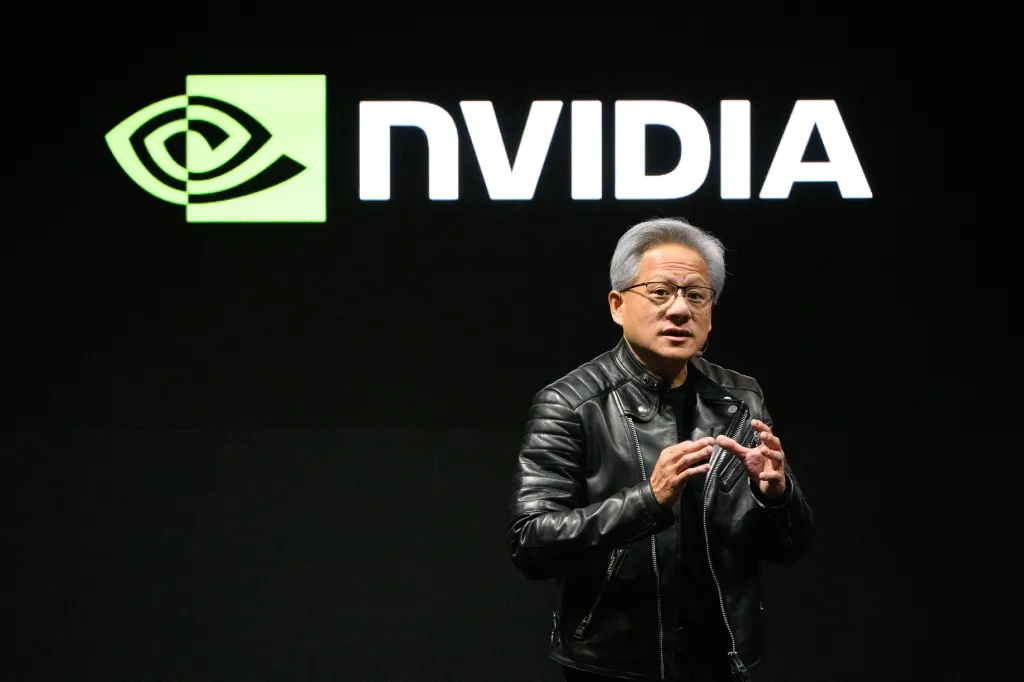For years, my byline was often attached to stories questioning the Nvidia narrative. I wasn't just reporting on the skepticism; I was the skeptic. The whispers – and sometimes shouts – about U.S. export controls and the tightrope Nvidia walked with China? I saw it as a looming geopolitical tripwire, a disaster waiting to happen. The Malaysian government's active investigation into alleged sanction circumvention by firms using Nvidia hardware only cemented my fears; it felt like confirmation of a company playing fast and loose. And those modified chips, like the rumored RTX 5090DD, reportedly designed specifically for the Chinese market to comply with restrictions? To me, they screamed of desperate measures to cling to market share, potentially diluting their cutting-edge advantage and, frankly, reeked of a company bending too far to placate a restricted market, possibly risking association with sanction evasion.
Then there was the valuation – that stratospheric, almost unbelievable number. I penned more than one piece echoing the warnings of The Motley Fool, drawing parallels to past tech bubbles like the dot-com crash, convinced that such a meteoric rise towards a $5 trillion valuation was unsustainable, a 'next-big-thing' fallacy waiting for its inevitable, painful correction. I pointed to other companies, suggesting they were the 'real winners' in specific AI developments, while Nvidia was perhaps just the overhyped pickaxe seller in a gold rush that might soon end, leaving many investors holding an empty bag. My critical lens was firmly in place, and I argued my points with conviction, genuinely believing I was providing a necessary counterbalance to unbridled techno-optimism.
My editor, perhaps sensing my entrenched cynicism needed a direct challenge, assigned me to cover Nvidia's GTC – not just the keynotes, but the deep-dive technical sessions, the developer roundtables, the 'boring' stuff I usually skimmed in press releases. I went, notebook filled with my usual pointed questions, expecting to find more holes in the hype, more reasons for my skepticism. Instead, over several days immersed in presentations on generative AI, accelerated computing, digital twins, and the sheer complexity of their full-stack platform, something shifted. It wasn't one single eureka moment, but a persistent, growing cognitive dissonance. One afternoon, sitting in a session on how Nvidia's CUDA platform and advanced GPUs were enabling breakthroughs in scientific research – from climate modeling to drug discovery, presented by academics and researchers, not marketing VPs – I felt a distinct intellectual discomfort. These weren't hype merchants; they were scientists on the front lines, solving real-world problems. The scale of ambition, backed by tangible, complex engineering, was far greater than I had given credit for. The 'catalyst' was this slow burn of evidence, this immersion in a world I had only observed from a critical distance.
One of the pillars of my skepticism was Nvidia's China strategy and its dance with U.S. export controls. My long-held view, particularly sharpened by the Malaysian investigation reports and the news of modified chips, was that Nvidia was recklessly, perhaps even unscrupulously, navigating these turbulent waters. I saw it as a dangerous game that prioritized profit over geopolitical stability and compliance integrity. But as I delved deeper, speaking with analysts who specialized in semiconductor trade policy and even (off-the-record) with individuals familiar with Nvidia’s extensive compliance frameworks, a more nuanced picture emerged. I began to understand the immense pressure of global demand and the tightrope walk required to serve legitimate customer needs in complex markets while adhering to stringent, ever-evolving U.S. regulations. The development of modified chips, I started to grasp, wasn't primarily about circumventing bans wholesale, but about engineering products that met the specific, often narrow, performance thresholds set by those export controls. It was an act of meticulous adaptation, driven by a commitment to lawful market participation, not defiance. The goal, it seemed, was to legally provide technology where permissible, acknowledging that an absence of legitimate channels could paradoxically spur faster, less transparent, and potentially problematic indigenous development elsewhere. This was a tough pill to swallow. It meant reframing what I saw as 'dodging' into 'navigating' a complex legal and geopolitical maze. The situation in Malaysia, of course, still requires utmost scrutiny and Nvidia's full cooperation with authorities, which they've publicly pledged. But my blanket condemnation of their approach started to feel overly simplistic, lacking an appreciation for the operational realities of a global tech leader.
The valuation. Ah, the albatross around Nvidia’s neck, or so I believed. My articles frequently cited historical tech bubbles, warning investors that Nvidia's stock price was untethered from reality. I was convinced it was a classic case of irrational exuberance, fueled by AI hype that would inevitably cool. My GTC immersion, however, forced me to confront the scale of the AI revolution Nvidia is not just participating in, but actively architecting. It wasn't just about faster gaming graphics anymore; this was about a fundamental shift in computing, touching every industry – healthcare, finance, automotive, manufacturing, scientific research. I started to see Nvidia less as a chip maker and more as the architect of an entire computing platform, a full-stack ecosystem of hardware (GPUs, CPUs, DPUs, networking), software (CUDA, Omniverse, AI Enterprise), and frameworks that creates an incredibly sticky and defensible moat. The financial forecasts, which I once dismissed, began to look less like wild speculation and more like an attempt to quantify the value of a company that is, quite literally, building the infrastructure for the next industrial revolution. Their technological leadership, evident in planned advancements like HBM4 for the Rubin platform, alongside strategic investments in enabling technologies like Small Modular Reactors (SMRs) for data center power and their stake in companies like SandboxAQ, pointed to a long-term vision far beyond a short-lived boom. It was humbling. I had dismissed the valuation based on historical analogies without fully grasping the unprecedented nature of the current technological inflection point. While caution is always warranted in any investment, my 'bubble' critique now felt like applying horse-and-buggy economics to the advent of the automobile. The premise of the value started to make a terrifying amount of sense when viewed against the backdrop of a technology poised to redefine global productivity.
I often fell into the trap, as many commentators do, of looking for the 'real winner' in AI, eager to point out when other companies, perhaps an AI data center stock benefiting from a new partnership, seemed to be the primary beneficiary. My narrative was that Nvidia, while important, was just one piece of a much larger puzzle, and perhaps not even the most crucial one for investors looking for specific outcomes, thereby diluting Nvidia's central role. What I failed to appreciate, until I saw the intricate web of dependencies at GTC and in subsequent research, was Nvidia's foundational role. Yes, other companies are 'winning' with AI, but an overwhelming majority of them are winning on Nvidia's platform. They are the enablers, providing the core computational power and the software development tools that make these AI breakthroughs possible for tech giants, research institutions, and countless startups and enterprises. The strategic investments, the constant push for more powerful and efficient architectures, the development of technologies that accelerate both training and inference – these aren't just about Nvidia winning; they are about lifting the entire AI ecosystem. My perspective shifted from seeing Nvidia as a player to seeing them as the foundational layer, the indispensable engine. This doesn't dilute their narrative; it amplifies it by underscoring their critical role in enabling nearly all other AI successes.
Finally, the need to create specialized, sometimes performance-adjusted chips for markets like China, I interpreted as a sign of weakness. It suggested that competitive pressures, coupled with U.S. restrictions, were forcing Nvidia to compromise its top-tier offerings and potentially cede ground. Now, I see this through a different lens: resilience and strategic market adaptation. In a globally competitive landscape, especially one as fraught with geopolitical tensions as advanced semiconductors, the ability to adapt product lines to meet specific regulatory requirements and market needs without violating core restrictions is a strength, not a weakness. It demonstrates sophisticated engineering and a deep understanding of market dynamics. It’s about maintaining a presence, legally and ethically, where possible, rather than ceding entire crucial markets to competitors who might operate with fewer constraints or transparency. Instead of a company backpedaling under pressure, I started to see a company strategically navigating an incredibly complex obstacle course, ensuring it can serve a global customer base within the confines of international law. This is the mark of a mature, leading tech company, not one showing cracks under competitive strain.
My journey from Nvidia skeptic to, well, someone who finally gets the bigger picture, has been a humbling one. I haven't suddenly become a rah-rah cheerleader, and the concerns I once championed – geopolitical risks, the sheer audacity of the valuation (which still demands performance to justify), the competitive landscape – haven't vanished. They remain critical factors that demand ongoing scrutiny from journalists, analysts, and investors alike. But I was wrong to view them solely through a lens of impending doom, wrong to dismiss the sheer innovative power, the profound technological depth, and the strategic foresight of this company. My deeply ingrained skepticism, built on past tech flameouts and a healthy distrust of hype, blinded me to the profound technological shift underway and Nvidia's pivotal, foundational role within it. I am still processing the implications of this changed perspective, and I don't claim to have all the answers now any more than I did then. But I do know this: it's easy to stand on the sidelines and critique. It's much harder to build what Nvidia is building. Perhaps, if you share some of my old doubts, it's worth taking a deeper look too, beyond the headlines and the stock tickers, at the fundamental work being done and the transformative era they are helping to usher in. You might be as surprised as I was.



